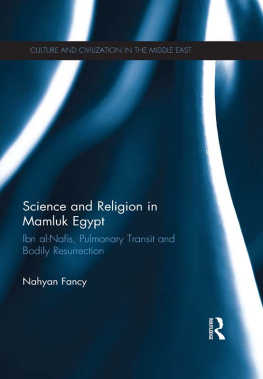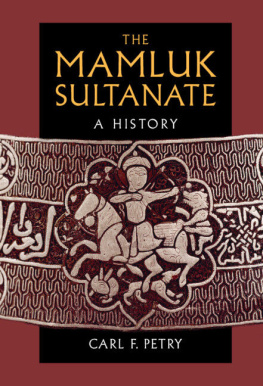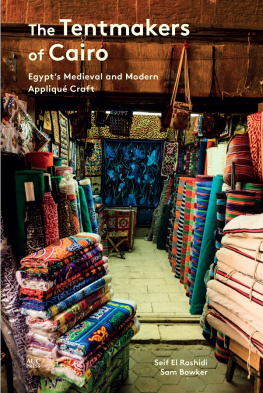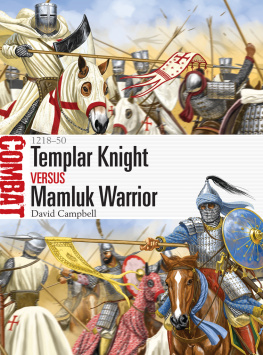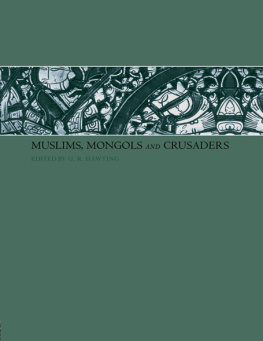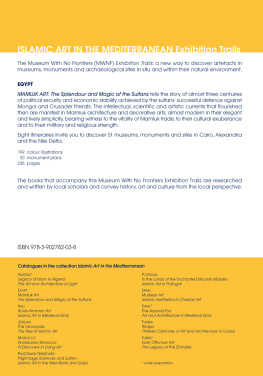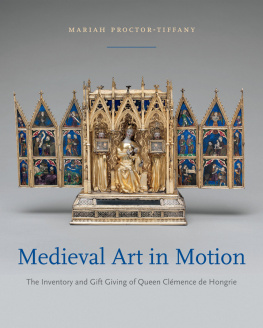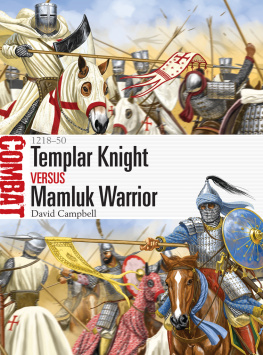Doris Behrens-Abouseif is the Nasser D. Khalili Professor of Islamic Art and Archaeology at the School of Oriental and African Studies (SOAS), University of London. She previously taught at the American University in Cairo and the University of Munich. She is widely acknowledged as the pre-eminent scholar on the architecture of Cairo, and a leading specialist in the art and cultural history of the Middle East. She has written a number of books on Islamic art and architecture including Cairo of the Mamluks: A History of Architecture and its Culture (I.B.Tauris), The Minarets of Cairo: Islamic Architecture from the Arab Conquest to the End of the Ottoman Period (I.B.Tauris), Beauty in Arabic Culture and Egypts Adjustment to Ottoman Rule .

Published in 2014 by I.B.Tauris & Co. Ltd
6 Salem Road, London W2 4BU
175 Fifth Avenue, New York NY 10010
www.ibtauris.com
Distributed in the United States and Canada Exclusively by Palgrave Macmillan
175 Fifth Avenue, New York NY 10010
Copyright 2014 Doris Behrens-Abouseif
The right of Doris Behrens-Abouseif to be identified as the author of this work has been asserted by the author in accordance with the Copyright, Designs and Patents Act 1988.
All rights reserved. Except for brief quotations in a review, this book, or any part thereof, may not be reproduced, stored in or introduced into a retrieval system, or transmitted, in any form or by any means, electronic, mechanical, photocopying, recording or otherwise, without the prior written permission of the publisher.
Every attempt has been made to gain permission for the use of the images in this book. Any omissions will be rectified in future editions.
Library of Middle East History 44
ISBN: 978 1 78076 877 9
eISBN: 978 0 85773 541 6
A full CIP record for this book is available from the British Library
A full CIP record is available from the Library of Congress
Library of Congress Catalog Card Number: available
Typeset by Bright Lantern Publishing
To J.M. Rogers
CONTENTS
ILLUSTRATIONS AND CREDIT
Front Endpaper
Map of the Mamluk diplomatic network.
Plates
Faade of the hospital of Sultan al-Muayyad Shaykh, temporarily used as a guesthouse. Photo by the author.
The mausoleum dome of the Emir Jawhar al-Qunuqbai in Cairo, 1440. Photo by the author.
Ceramic figurine of an elephant carrying a palanquin with musicians, Syria, thirteenth century. Khalili Collection, Nour Foundation (POT 1285).
The arrival of a giraffe sent by Sultan Faraj to Timur in Samarqand. Double page of Yazdis Zafarname, Shiraz, 1436. Left: Worcester Art Museum, Worcester, Massachusetts. Bequest of Alexander H. Bullock, 1962 (187). Right: Keir Collection. By kind permission of Ranros Universal SA. Photo by A.C. Cooper.
Medieval French jug of rock crystal. V&A Museum, London (15-1864).
Brigandine in the name of Sultan Jaqmaq. Museo Nazionale del Bargello, Florence (Azmi 1244).
Elements of Aq Qoyunlu silver-inlaid armour. Askeri Mzesi, Istanbul.
Helmet in the name of Sultan Barsbay. Muse du Louvre, Paris (OA 6130).
Chamfron in the name of Emir Muqbil al-Rumi, early fifteenth century. Muse des Beaux-Arts de Lyon, MBA Lyon (D 377-1).
Axe in the name of al-Nasir Muhammad, son of Qaytbay. Askeri Mzesi, Istanbul (8434).
Axe in the name of al-Nasir Muhammad, son of Qaytbay. Kunsthistorisches Museum, Wien (HJRK C 113).
Mamluk axe. Fifteenth century. Museo Nazionale del Bargello, Florence (1227/M).
Armour in the name of Sultan Qaytbay, front, back and detail. Mersin Naval Museum.
Armour of Emir Sayf al-Din Inal, 142843. Furusiyya Collection, Vaduz (R- 749) front and back view. Photos by Debra Nol Adams.
Vulcan and Aeolus. By Piero di Cosimo, 1490s. National Gallery of Canada, Ontario (No 4287).
Giraffe with Mamluk groom. Engraving in Sigismondo Tizios Historiae Senenses. After John Barclay Lloyd, late fifteenth century.
Adoration of the Magi by Bernardino Luini, 1525. Santa Maria dei Miracoli, Sarrono. Alinari Archives (BEN-F-001304-0000).
Adoration of the Magi by Bernardino Luini. Cathedral of Como, 1513. Alinari Archives (RAN-F-000002).
Lorenzo di Medici receiving a Mamluk embassy with a giraffe and other animals. Painting by Giorgio Vasari 15568. Ceiling of Cosimo di Medicis apartment at the Palazzo Vecchio in Florence. Alinari Archives (BEN-F-000562-0000).
Feast of the gods. Giovanni Bellini, 1514. National Gallery of Art, Washington.
Giraffe led by an African groom. Veneranda Biblioteca Ambrosiana, Milano/De Agostini Picture Library (D 140 inf).
Elephant with Mamluk groom. Fresco by an unknown artist, 1480s. At the courtyard of Castello Sforzesco, Milan. Commune of Milan, all rights reserved. Photo by Fabio Saporetti.
Capture of an elephant. Roman mosaics, Piazza Armerina, Sicily. Erich Lessing Culture and Fine Arts Archives (11010360-a4).
Mantle for a statue of the Virgin. Fifteenth-century Mamluk silk. Cleveland Museum of Art (39.40).
Dalmatic at the St Annen-Museum Lbeck. Fourteenth-century Mamluk silk. Photo by Walter Haberland.
ACKNOWLEDGEMENTS
The idea of a study focused on Mamluk diplomatic gifts occurred to me when I was given the opportunity to present a paper at a conference titled Mamluk Cairo: Crossroad of Embassies, which was organised by Frdric Bauden at the University of Lige in September 2012. This highly stimulating event, which unfolded the breadth of the Mamluk diplomatic network, inspired me to expand my research in a book on gift exchange around the Mamluk Sultanate.
I am grateful to colleagues, students and friends who have given me valuable references and information, or helped me acquire material that is not easy to access: Manijeh Bayani, Rmi Dewire, Sami De Giosa, Carola Di Pauli, Richard Goldwraith, Julien Loiseau, Lucian Reinfandt, Scott Redford, J.M. Rogers, Maria Sardi and Tania Tribe.
I am also very much indebted to David Alexander for sharing with me his information, including his unpublished notes, and for his kind and prompt responses to my many email queries.
The generous support of Nurhan Atasoy in Istanbul, Marco Spallanzani in Florence and Bashir Mohammed at the Furusiyya collection made my fieldwork an agreeable experience.
I also thank Matthias Pfaffenbichler at the Kunsthistorisches Museum in Vienna, Francesco Civita at the Stibbert Museum, Marino Marini at the Bargello Museum, Blent Ttncolu and Tnay Gkiran at the Military Museum in Istanbul and Ece Irmak at the Naval Museum in Istanbul for their kind and friendly assistance during my fieldwork, and Richard Deunger, Nahla Nassar and Birgitt Borkopp-Restle respectively for the pictures from the Keir Collection, the Nasser D. Khalili Collection and the St Annen-Museum in Lbeck.
My fellowship at the Annemarie Schimmel Kolleg at the University of Bonn in the summer of 2013 greatly facilitated the completion of my research; I thank Stephan Connermann for the invitation.
I am grateful to the Barakat Trust for the grant that significantly contributed to my fieldwork, the production of the manuscript and the illustrations.


